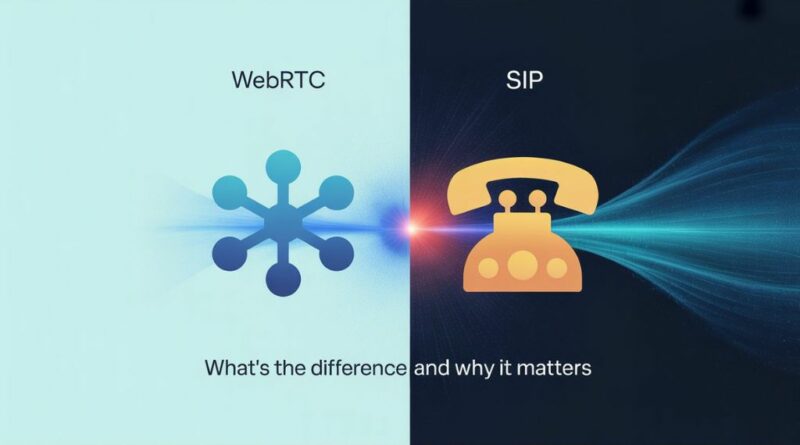WebRTC vs SIP: What’s the Difference and Why It Matters
If you’ve ever set up a VoIP system or explored real-time communications, you’ve likely come across two terms: WebRTC and SIP. While both enable voice and video communication over the internet, they operate in very different ways — and understanding these differences is crucial for businesses deciding on their next communication platform.
What is SIP?
The Session Initiation Protocol (SIP) is a signalling protocol used to establish, manage, and terminate communication sessions. SIP has powered VoIP systems for over two decades, forming the backbone of PBX servers and softphones.
Key features of SIP:
- Standardised protocol widely supported across devices
- Handles call setup, modification, and teardown
- Relies on external protocols (like RTP) for media transport
For a detailed breakdown, see the IETF SIP specification.
What is WebRTC?
Web Real-Time Communication (WebRTC) is a newer technology that runs natively in modern browsers. It allows real-time audio, video, and data sharing without plugins or additional software.
Key features of WebRTC:
- Peer-to-peer connections with built-in NAT traversal
- Encrypted by default (SRTP/SRTCP)
- Direct support for audio, video, and data channels
- Designed for browser-first experiences
Learn more at the official WebRTC.org.
WebRTC vs SIP: The Key Differences
- Purpose
- SIP: Focused on call signalling and control.
- WebRTC: Full-stack real-time communication, including media.
- Transport
- SIP: Uses RTP for media; signalling handled separately.
- WebRTC: Handles media transport natively with encryption.
- Deployment
- SIP: Often requires a PBX server or SIP proxy like Kamailio.
- WebRTC: Works directly in browsers with minimal setup.
- Security
- SIP: Security depends on implementation (TLS/SRTP optional).
- WebRTC: Encryption is mandatory.
- Integration
- SIP: Works seamlessly with existing VoIP networks.
- WebRTC: Ideal for web apps, video conferencing, and browser-based softphones.
Do They Compete or Complement?
The truth is, WebRTC and SIP are often used together. For example, a WebRTC softphone can connect to a SIP PBX using a WebRTC-to-SIP gateway. Open-source projects like Asterisk WebRTC and FreeSWITCH WebRTC make this convergence practical.
Why Businesses Should Care
- Remote Work Ready: WebRTC makes it easy for employees to join calls from anywhere.
- Future-Proofing: SIP remains essential for enterprise telephony, while WebRTC dominates browser-based apps.
- Cost Efficiency: Businesses can combine both for maximum flexibility and minimal overhead.
Conclusion
SIP remains the trusted standard for enterprise VoIP, but WebRTC is defining the future of real-time communication. For most businesses, the smartest strategy isn’t choosing one over the other — it’s integrating WebRTC with existing SIP systems to get the best of both worlds.
For more articles like this one, visit Softpage.



